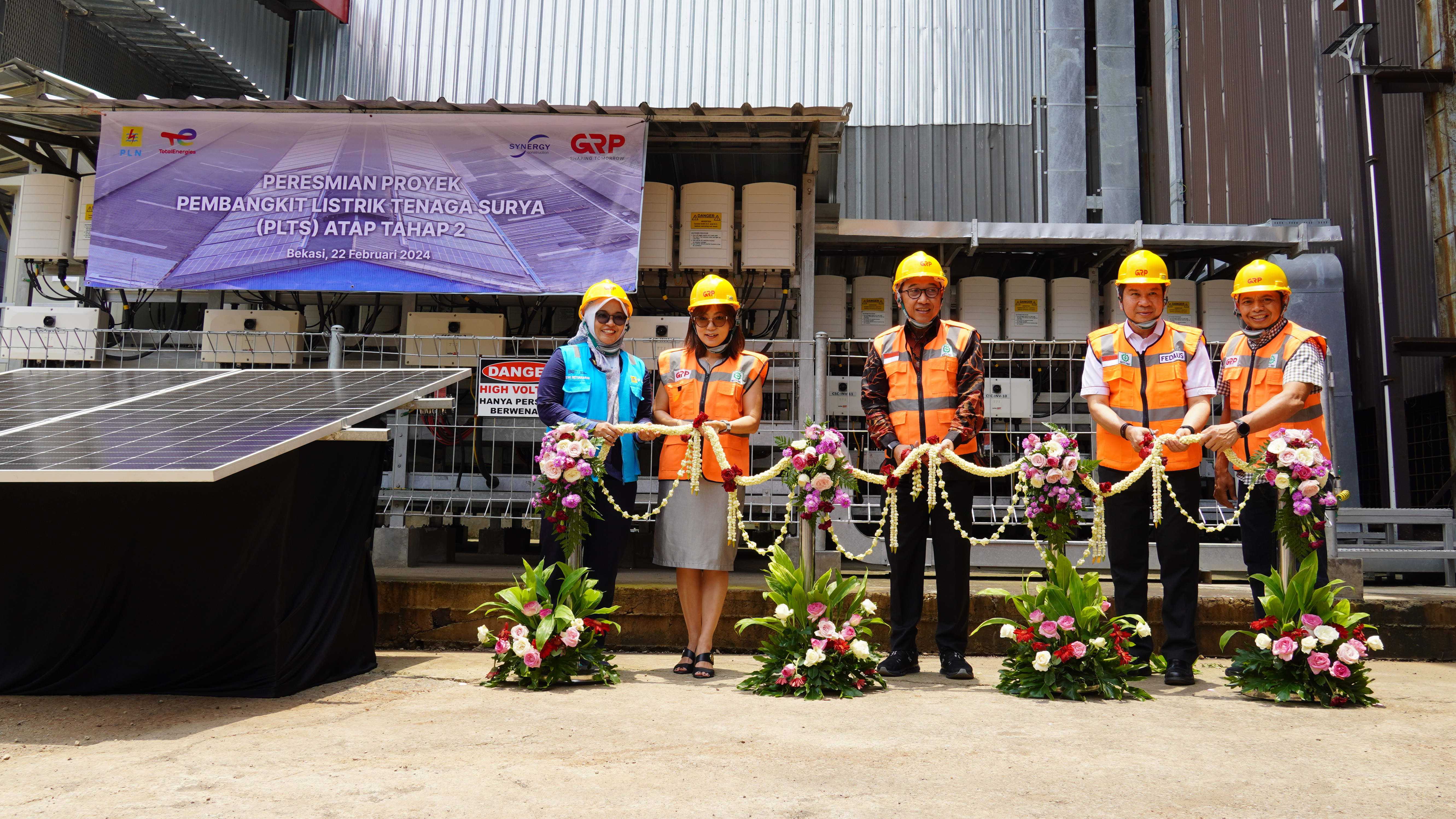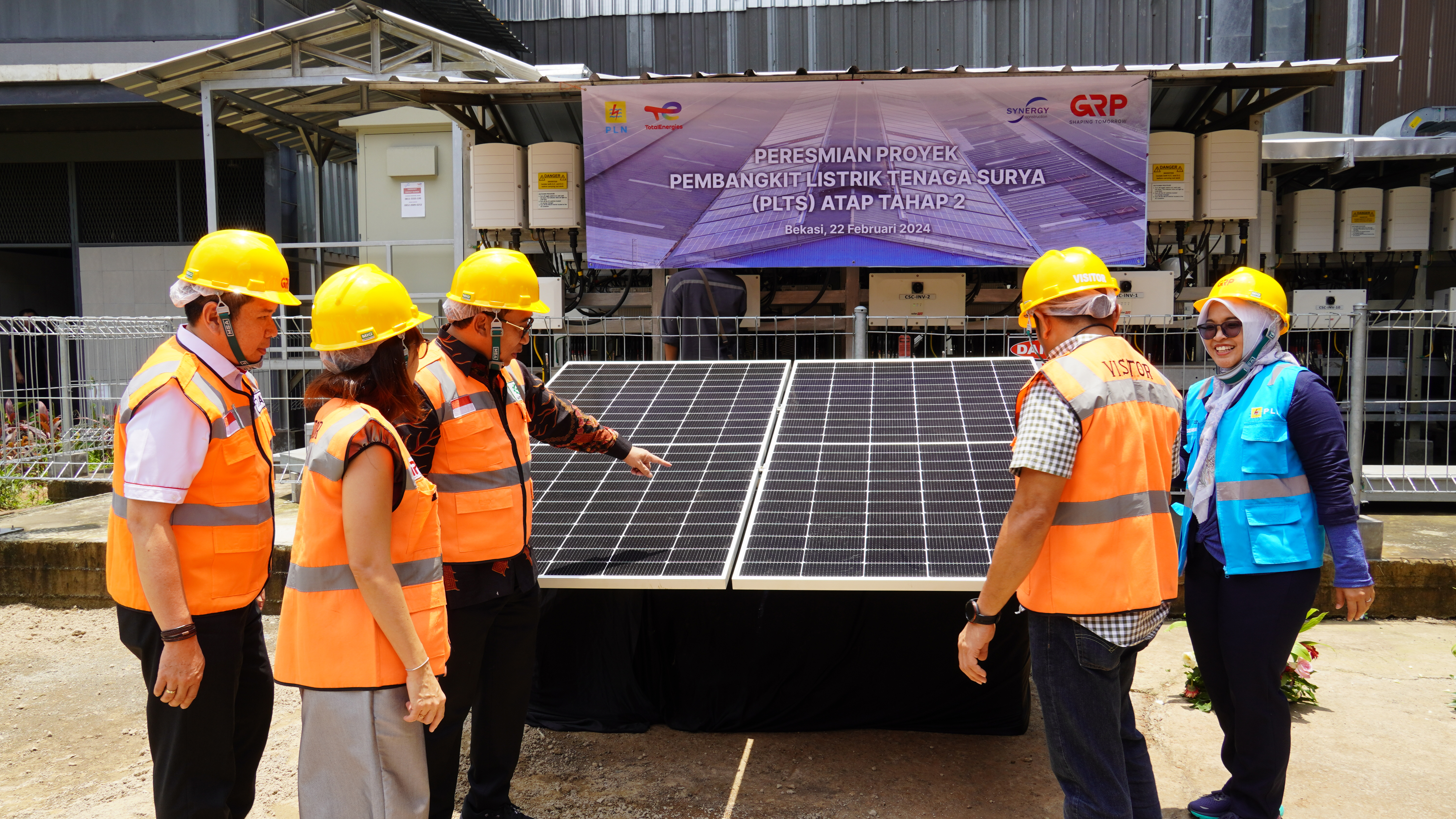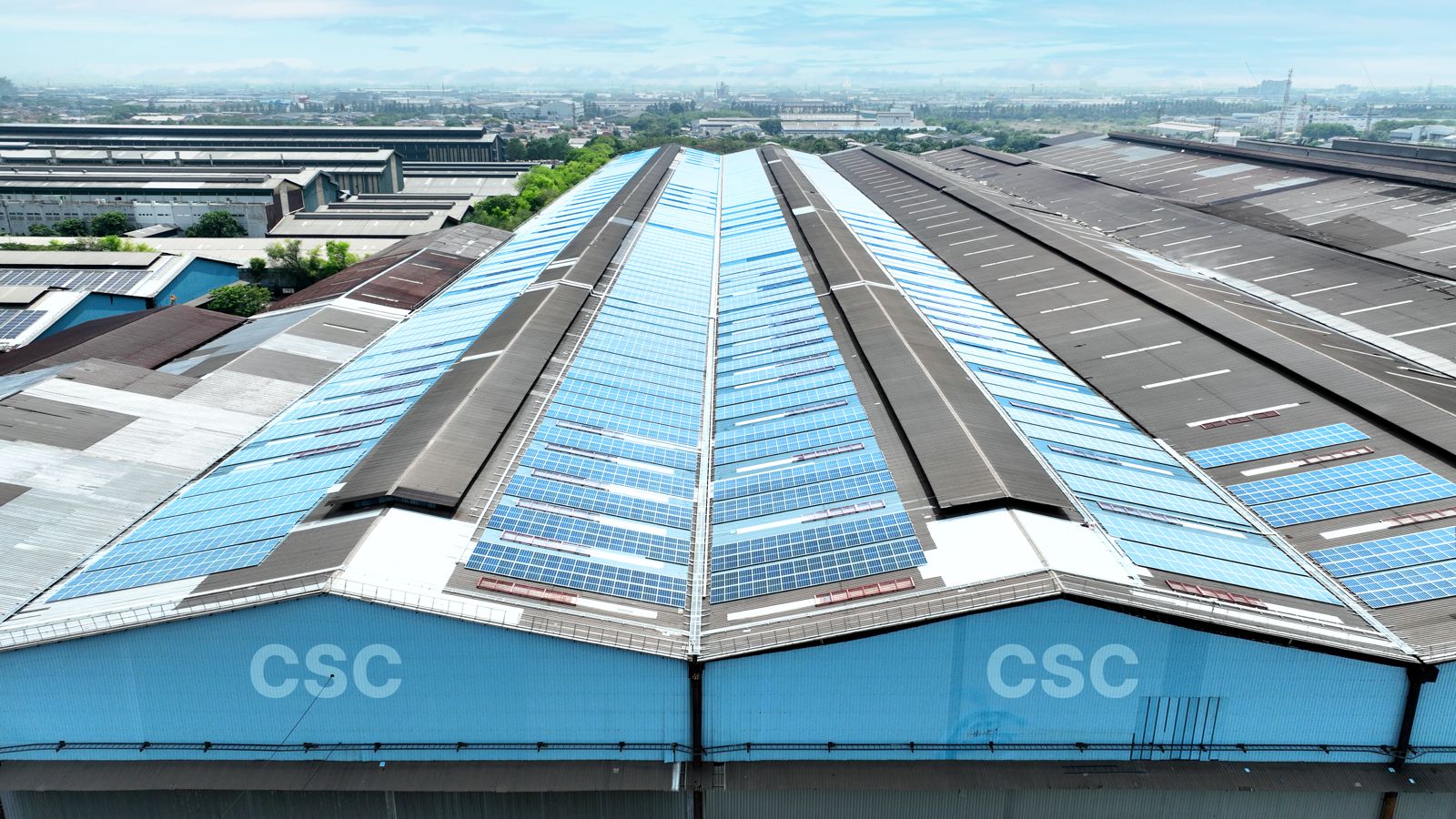GRP 启用西爪哇最大的屋顶太阳能发电厂之一,总容量为 9.3 MWp

Cikarang Barat, 22 February 2024 — PT Gunung Raja Paksi Tbk (GRP) once again demonstrates its initiative to reduce carbon emissions by inaugurating the second phase of the Rooftop Solar Power Plant (PLTS Atap) project installed within the company's operational area. The second phase of this rooftop solar power plant was inaugurated by the Director of Engineering and Environmental Electricity at the Ministry of Energy and Mineral Resources of the Republic of Indonesia, Ir. Mohamad Priharto Dwinugroho, M.S.E., along with the management teams of GRP, TotalEnergies ENEOS, PLN UPT Bekasi, and PLN UP3 Cikarang.
The installation of this Rooftop Solar Power Plant reaffirms GRP's commitment as part of its previously announced Net Zero strategy. With this phase 2 inauguration, the total installed electrical capacity from solar energy in GRP will reach 9.3 MWp (Megawatt Peak), making it one of the largest Rooftop Solar Power Plants in West Java. Phase 1 has a capacity of 0.9 MWp, while phase 2 has a capacity of 8.4 MWp. GRP targets an installed Rooftop Solar Power Plant total capacity of 33 MWp, planned to be completed by 2025, with an expected reduction in carbon emissions of around 47,400 tons per year.
Director of Engineering and Environmental Electricity at Indonesia’s Ministry of Energy and Mineral Resources, Mohamad Priharto Dwinugroho, M.S.E., appreciates GRP's initiative. He stated, "The Ministry of Energy and Mineral Resources (ESDM) continues to encourage active participation from businesses in supporting the achievement of the Net Zero Emission (NZE) target by 2060 or earlier, and the national energy mix target of 23% from new and renewable energy sources (EBT) by 2025. One of the strategic programs of this effort is the widespread development of Rooftop Solar Power Plants. The action taken by GRP is a tangible example of environmental concern and represent private sector contribution to the government’s objectives."
The steel industry plays a crucial role in Indonesia's economic growth. According to data from the Ministry of Industry of the Republic of Indonesia, domestic steel consumption over the last five years has averaged 15.62 million tons per year. However, new challenges are emerging for the steel industry due to global commitments to achieve net zero carbon emissions by the mid-century. Globally, steel production accounts for approximately 7% of total carbon emissions. With steel demand expected to increase by around 15-20% between 2030 and 2050, steel producers must be more proactive in managing environmental, social, and governance (ESG) risks across the value chain.
President Director of GRP, Fedaus, stated, "The installed Rooftop Solar Power Plant within our operational area is in line with GRP's 5 ESG Pillars, particularly Pillar No. 3 concerning Energy Transition and Low Carbon Solutions, where the company is responding and managing climate-related risks and opportunities across the value chain. With the installation of this second phase of PLTS Atap, GRP has successfully reduced carbon emissions by approximately 1500 tons of CO2e."
GRP is collaborating with TotalEnergies ENEOS, which is responsible for the design and selection of reliable EPC partners for the construction implementation at each stage of the Rooftop Solar Power Plant (PLTS Atap) project. For its operation and maintenance, this Rooftop Solar Power Plant is equipped with sensors to monitor radiation, temperature, wind speed, and ambient temperature. Additionally, the system will also operate with remote monitoring by sending performance analysis data displaying carbon footprint.

